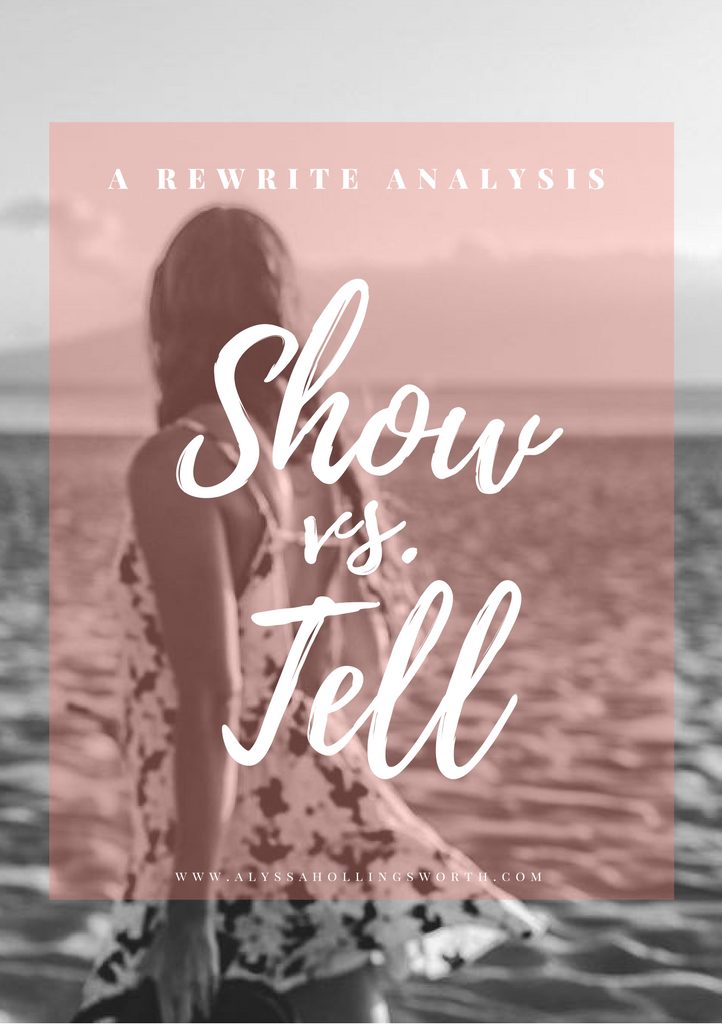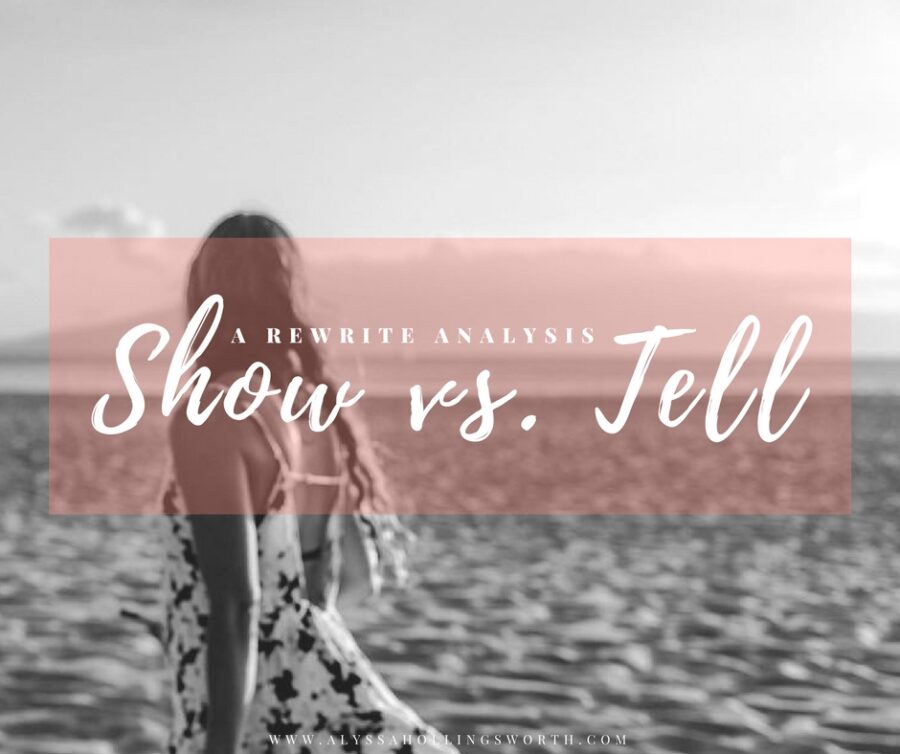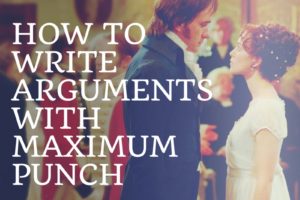
Photography by Jason Koons
Show vs. tell is one of the most difficult things to learn as a young writer. One of my novel mentees came to me with some excerpts to examine for the dreaded telling pitfall. This lovely writer had spent hours scouring the internet for advice, but found herself becoming more and more confused.
My method of mentoring often involves examples — partially because I learn by doing the thing, so I have to try it before I can fully explain it. I took her paragraph and spent about 15 minutes rewriting it in my own voice. Then I made myself go back and, sentence by sentence, analyze the subconscious choices I had made.
With her permission, I’m going to share the original draft and my annotated rewrite. I’m hoping it will help provide practical clarity on the show vs. tell phenomenon.
Tiny bit of context:
- Our narrator is “Heather”
- Heather was a surrogate for Sara and gave birth to Matthew
- Heather, who has gained custody of Matthew, is now struggling with the prospect of sharing Matthew with his biological father, Peter
- I changed all the names so they might be lame
Original Draft:
She had rationalized her fear of losing Matthew as a direct result of having to relinquish him to Sara. Watching Matthew play with his favorite truck, her insecurity in her role as his mother and sole provider now threatened to overwhelm her. And she had to be honest and face the reality of the situation now. It was no longer about Sara keeping her from him, this was about his biological father, his other rightful parent, having access to him and a say in his future. Matthew stood up, looking at her, his head turned to one side, smiling at her. She gasped, that look was one hundred percent Peter Easton. This was not going to be easy.
Rewrite:
Watching Matthew play with his favorite truck, a chill of unease spread through Heather. It weighed in her stomach, and she crossed her arms, trying to hold it back. She was Matthew’s mother, his sole provider — there was no reason to be afraid. This wouldn’t be like Sara, who had been so determined to keep Heather and Matthew separated. Peter had as much of a right to Matthew as Heather, it couldn’t be denied any longer. She had to face the reality and come to terms.
Tomorrow. Or the day after.
Matthew looked at her, head cocked to one side, and grinned. The expression was one hundred percent Peter Easton.
Heather bit her lip over a gasp. This wouldn’t be easy.
Analysis of Show vs. Tell:
Watching Matthew play with his favorite truck…
Start with the present-action before we go into her train of thought. This helps clarify the scene and preps the reader to go into Heather’s head.
… a chill of unease spread through Heather. It weighed in her stomach, and she crossed her arms, trying to hold it back
Instead of telling us what and why she feels a certain way, show us how her emotions affect her physically, and what she does about it. Her body language here conveys her insecurity without saying she’s feeling insecure.
She was Matthew’s mother, his sole provider — there was no reason to be afraid.
This helps give Heather more character voice, and also brings us closer to the narrator. We’re definitely in her stream of thoughts now. Phrases like “she had to be honest” and “rationalized” aren’t necessary because we’re right here in the moment with her, and we can sense her trying to approach this logically.
This wouldn’t be like Sara, who had been so determined to keep Heather and Matthew separated.
This is basically just a condensed version of a few sentences. It flags up the reason she is afraid but without explaining too much about the whys and whens.
Peter had as much of a right to Matthew as Heather, it couldn’t be denied any longer.
Again, there’s no need for the passive voice or framing devices here (“it was no longer about Sara keeping her from him, this was about his biological father”). Instead, we’re right in the thought with Heather, getting a sense of her talking to herself in her voice.
She had to face the reality and come to terms.
Old draft: “She had to be honest and face the reality of the situation now.” This feels like telling because of the phrase “had to be honest,” I think. It tells us that someone is analyzing her thoughts for us instead of giving them to us directly. By removing that phrase, we remain in the moment and can more clearly tell that she’s saying this to herself, not that the author is saying it to us.
Tomorrow. Or the day after.
I added this to put in a sense of Heather’s voice and a little bit of humor. Additionally, it works well to show the reader her reluctance in the very structure of the sentences, instead of telling us about it. It also helps us transition out of the train of thought and back into reality.
Matthew looked at her, head cocked to one side, and grinned.
To signal that we’re back in reality, I’ve separated this into its own paragraph. I also condensed the action so we could really focus on what matters in this moment — the angle of his head and the grin.
The expression was one hundred percent Peter Easton.
Because this is important, I’ve separated it into its own sentence.
Heather bit her lip over a gasp. This wouldn’t be easy.
Heather’s reaction gets its own space in a little mini paragraph. I also had her recognize the look as Peter’s before she gasps (so she is reacting to what the reader sees, instead of reacting and then explaining to the reader why she’s reacting that way). I had her bite her lip over the gasp to show her attempt at control that we’ve seen throughout this passage — it helps further reinforce that she’s trying to keep herself in check by showing her physically doing as much. I also changed that last sentence from “was” to “wouldn’t” to cut down on words and give a more informal/immediate feel to this realization.
Learning to show vs. tell, perhaps more so than any other facet of writing, is rather like learning to play the piano: At first, you have to carefully watch yourself and you clunk through your sentences. But as you practice, you gain a sixth sense for what works. You’ll know the next note instinctively, without having to look. So keep practicing!
(And, yes, I am paraphrasing Jonathan Strange & Mr. Norrell.)


















